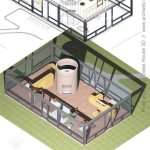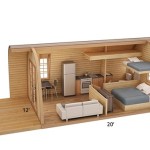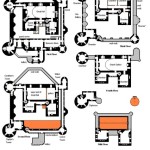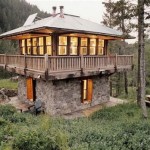Ancient Roman House Floor Plans: A Look Inside the Homes of the Romans
The ancient Roman house, known as a *domus*, was a fascinating and meticulously designed dwelling that reflected the social status and lifestyle of its occupants. From the humble abodes of the working class to the grand palatial villas of the elite, Roman houses displayed a remarkable range of architectural features. Understanding the floor plans of these homes reveals much about Roman society, their daily routines, and their cultural values.
Key Features of a Roman Domus
A typical Roman house, particularly those belonging to the wealthy, was designed with a strict, symmetrical layout centered around an *atrium*, an open courtyard. This courtyard served as the heart of the house, providing natural light and ventilation. The *atrium* was typically adorned with a pool, called an *impluvium*, which collected rainwater and served as a source of water for the house. Surrounding the *atrium* were various rooms, each serving specific functions:
•
Tablinum:
Located at the far end of the *atrium*, the *tablinum* was a formal reception room where the head of the household received guests and conducted business. It often displayed family portraits and important documents, symbolizing the family's prestige and history.•
Cubicula:
These were private bedrooms located around the *atrium*, primarily used for sleeping and personal activities. The number of *cubicula* varied depending on the size and status of the house.•
Triclinium:
This was the dining room, where meals were served in a reclining position on couches. The *triclinium* often featured impressive murals and decorative plasterwork, showcasing the owner's taste.•
Culina:
This was the kitchen, usually located in a separate wing of the house. The kitchen was equipped with a hearth for cooking and a mortar and pestle for grinding grains.Beyond the *atrium*, the house might include further rooms and facilities. For instance, a *peristyle*, a colonnaded courtyard, often provided a more private and secluded space. The *peristyle* was often adorned with gardens and fountains, creating a tranquil and luxurious atmosphere. In larger houses, there might also be dedicated spaces for baths, workshops, and even libraries.
Variations in Roman House Plans
While the general layout of a Roman house was standardized, significant variations existed depending on factors such as social class, location, and historical period. For example, the homes of the poor were much smaller and lacked the elaborate features of the wealthy. The layout of houses in different regions also exhibited variations, reflecting regional architectural traditions and the availability of materials.
The Pompeian houses, preserved by the volcanic eruption of Mount Vesuvius in 79 AD, offer valuable insights into the floor plans of Roman houses. The *domus* in Pompeii reveal a diversity of styles and layouts, reflecting the different social classes and occupations of their inhabitants. Some houses were simple, with only a few rooms surrounding a small *atrium*, while others were grand and luxurious, featuring elaborate gardens, fountains, and multiple courtyards. The Pompeii houses also provide evidence of the use of mosaics, frescoes, and intricate decorative elements in Roman interiors.
Evolution of Roman House Plans
Over time, Roman house plans underwent significant developments. The *domus* of the early Republic period was often small and utilitarian, with a simple layout and limited decor. As Roman society became more complex and wealthier, the *domus* evolved into more elaborate structures, with sophisticated architectural features and elaborate decorative schemes. The introduction of new materials, such as marble and glass, also influenced the design and construction of Roman houses. The increasing popularity of villas, especially during the Roman Empire, marked a shift towards more open and expansive living spaces, featuring large gardens, swimming pools, and intricate water features.
The study of ancient Roman house floor plans offers a fascinating glimpse into the lives of the people who lived in these homes. The designs, layouts, and features of these houses speak volumes about Roman society, their culture, and their values. The meticulous planning and attention to detail evident in these floor plans testify to the architectural prowess of the Romans and their profound understanding of space and living.

Plan Of A Pompeian House Roman Courtyard Plans Villa

Roman Domestic Architecture Domus Article Khan Academy

Pin By Rebecca Koch On Ancient Rome Roman Bath House Floor Plans

Pin On Roman Houses

Roman House

The Roman Domus World History Encyclopedia

House Of The Vine Museums Victoria

The Roman Domus House Architecture And Reconstruction

A Atrium Of Roman House E Central Hall With Roof Opening At The Scientific Diagram

View Page Roman Atrium Style Housing








